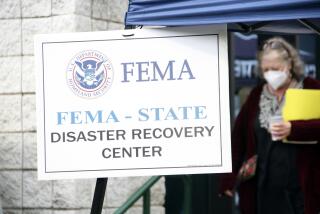North Carolina Still Not Over Hurricane
GREENVILLE, N.C. — Janie Teele still gets nervous when it rains hard, even though she has a place of her own again eight months after Hurricane Floyd took the old one.
“What I went through, I see it as the Third World, where you have monsoons,” said Teele, a secretary at City Hall. “I just can’t see it happening again.”
After last year’s encounters with hurricanes Floyd, Dennis and Irene, North Carolina emergency officials are taking no chances with the new storm season that begins Thursday. Dennis battered the coast for a week before slogging ashore, while Irene menaced, then veered out to sea.
State Emergency Management Director Eric Tolbert said the state is still pushing ahead with Floyd recovery efforts while readying for future hurricanes, both on the coast and inland. Forecasters have warned that the storms of the past few years are the start of an active hurricane era.
“We are very concerned with the forecast over the next two decades of increased hurricane activity,” said Tolbert.
Floyd, North Carolina’s worst natural disaster, barreled ashore Sept. 16 at Oak Island and drenched eastern North Carolina with 20 inches of rain, causing epochal flooding, at least 51 deaths and a record $6 billion or more in damage.
Greenville, about 70 miles east of Raleigh, sustained at least $87 million in private property damage. About 20 miles to the northeast, Princeville, a town founded by freed slaves, was nearly destroyed; a presidential commission is studying how to help it.
The storm left Teele’s mobile home uninhabitable. She lived with her three grandchildren in an aunt’s house until she got a government-financed apartment. Her mobile home is one of about 800 Greenville dwellings that are part of a federal buyout.
Flooding had such an impact on the city of 58,000 that the city government published a 2000 calendar with pictures from the storm’s aftermath.
Up to 6,000 Greenville residents were evacuated after the Tar River crested about 16 feet above flood stage, inundating a third of the city. Because of the experience there and in other eastern North Carolina communities, officials embarked on a campaign to buy and tear down structures in flood plains. By May, the governments planned to spend $291 million to buy 4,160 structures that once housed about 5,000 families.
At Oak Island, Floyd’s ground zero 30 miles south of Wilmington, bulldozers continue to move sand onto the beach to form new protective dunes while workers hammer and saw on everything from damaged beachfront steps to fishing piers.
Floyd ripped out about 800 feet of deck at the Long Beach Pier and dumped up to 3 feet of sand in the streets; today, the pier owners have rebuilt most of the structure.
“I couldn’t believe the devastation,” said Tommy Thomes, son of the pier’s owner. “I’ve been here for other hurricanes before, but this one was really bad.”
Fifty beachfront homes were destroyed, and others survive precariously.
“If you look down the beach either side from the pier, the amount of brand new treated lumber . . . there’s tons of rebuilding going on right now.”
Once regarded as largely a coastal phenomenon, hurricanes recently have struck deep into North Carolina with such frequency that emergency management officials may revise their advisories to coastal residents, said Tolbert.
He said coastal residents may be told in the future to stay put if they are safe from rising waters. During Floyd, people fled their coastal homes to Greenville, Rocky Mount, Wilson and other inland cities, only to face flood waters there.
“The flood reinforced the risk of people fleeing a safe area,” Tolbert said. “There’s no way of knowing where a hurricane is going to go and what kind of damage is going to happen inland.”
Since 1989, all but three North Carolina counties--Madison, Mitchell and McDowell, all in the state’s far west--have reported hurricane damage, said Tom Hegele of the emergency management division.
The change began with Hurricane Hugo in 1989, which came ashore at Charleston, S.C. It tracked through Charlotte and Winston-Salem before exiting into Virginia. In 1996, Hurricane Fran barreled into Raleigh with 100-mph winds, immobilizing parts of the city for weeks.
In Greenville, Assistant City Manager Marvin Davis and other city officials meet regularly to discuss recovery issues.
“One of the things we are trying to do is get people out of harm’s way,” Davis said as he drove past block after block of abandoned houses and apartments.
“We had about 2,000 structures that had 12 inches or more of water in them” after the storm cut off access to the city for about a week, Davis said. “It could happen again.”
More to Read
Sign up for Essential California
The most important California stories and recommendations in your inbox every morning.
You may occasionally receive promotional content from the Los Angeles Times.










